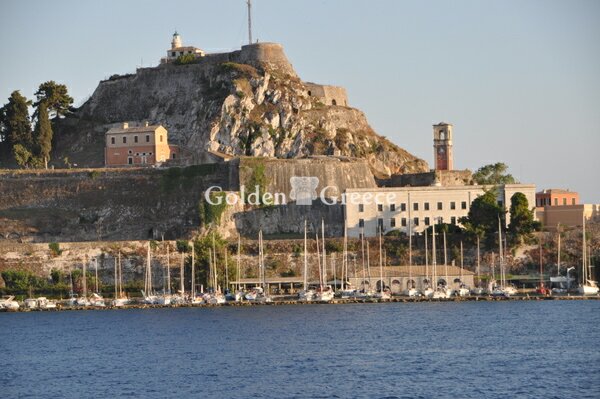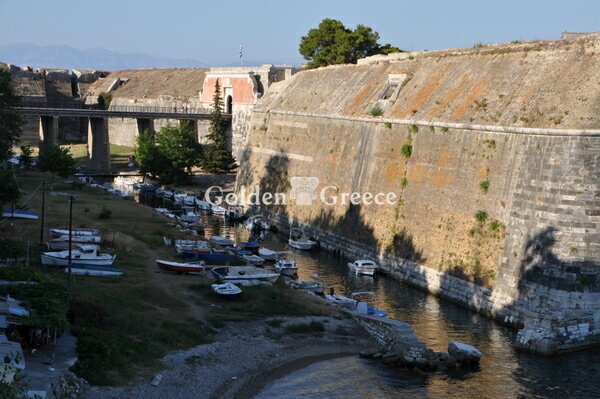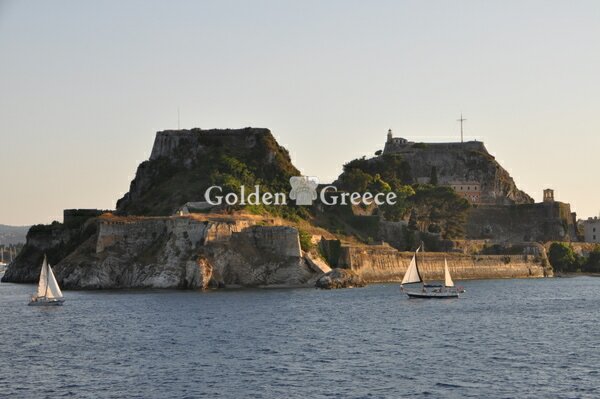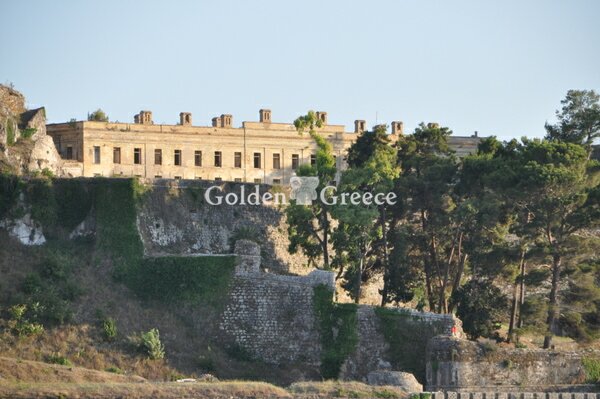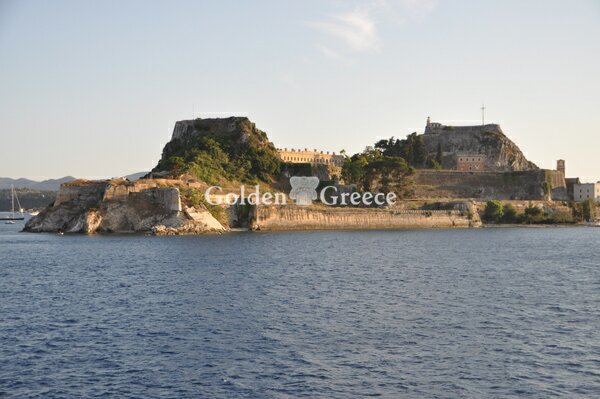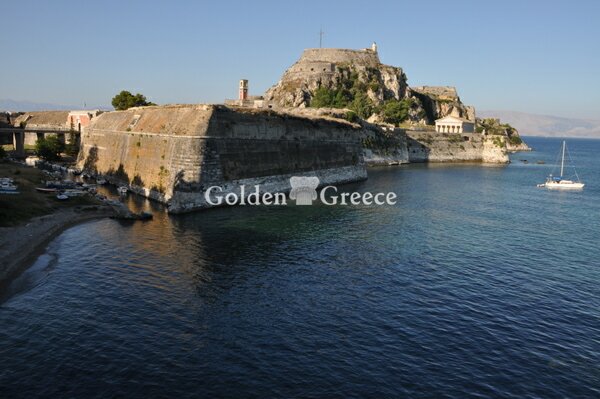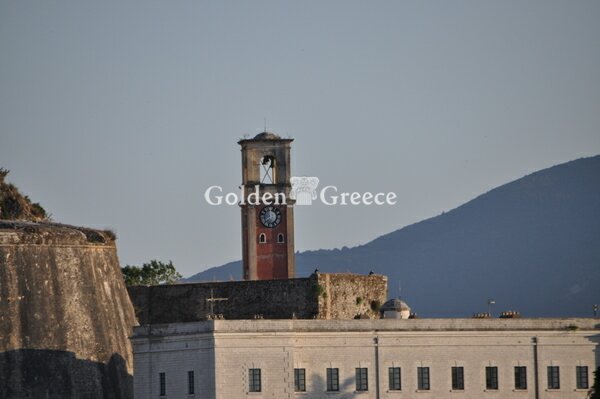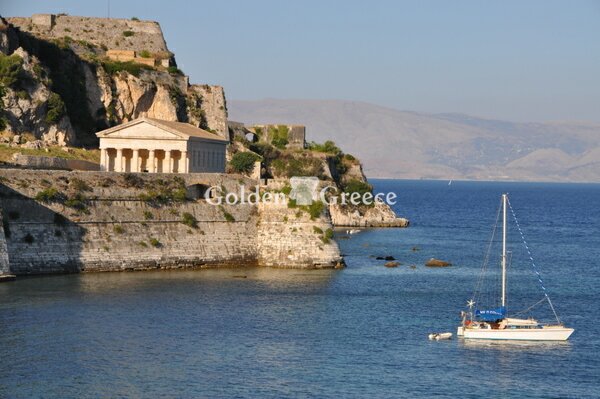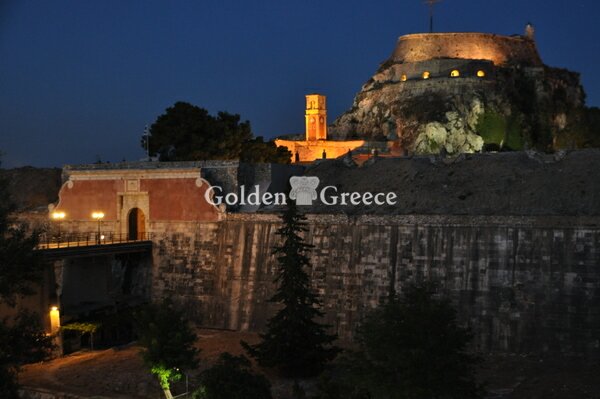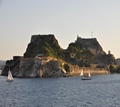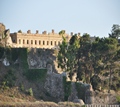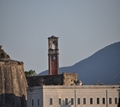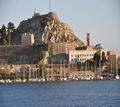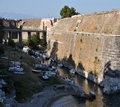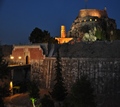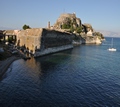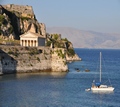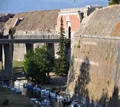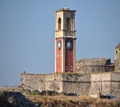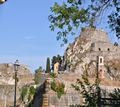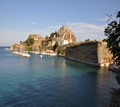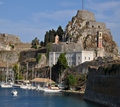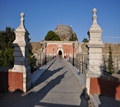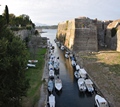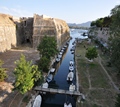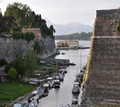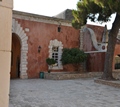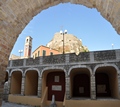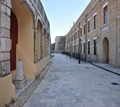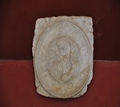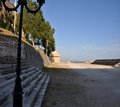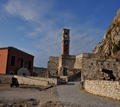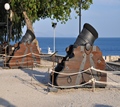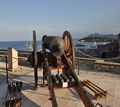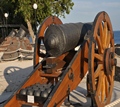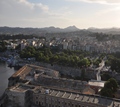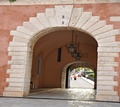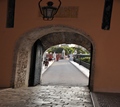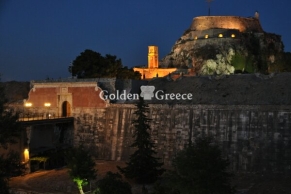
To the east of the Old Town rises the first fortress of Corfu, the Old or Fortezza. The current gate of the Fortress is located right in front of the legendary Liston, in Spianada Square. To enter you have to cross the bridge over the artificial moat, Contra Fossa, which has turned the Old Fortress of Corfu into an island. Two large bastions rise to the right and left of the central Gate while the two large Towers, the Land Tower and the Sea Tower were built on the two peaks. Inside the Old Fortress of Corfu are preserved imposing buildings, built by the Venetians and the British, to serve their military needs: a Venetian prison (1786), which was later expanded by the British, two English barracks (1850) and a military hospital, which today hosts the Music School. You should definitely visit the Doric church of Agios Georgios (1840) as well as the remarkable Byzantine collection of icons and mosaics.
The Old Fortress, built on a rocky peninsula with two characteristic hills (Corifes), forms the Eastern edge of the City. It began to be inhabited and fortified after the destruction of the ancient City (Paleiopolis) after the 6th century and became the City of Corfu (Corifo, Corfu) from the 11th to the 15th century. Since the 16th century, the City has assumed its current form and the Old Fortress is converted into a military area.
The fortifications were built over a long historical period of 15 centuries. From the various phases we distinguish three: The Byzantine period when the Eastern hill (Castell Vechio) was fortified, the early Venetian period when the peninsula was turned into an island and the Western hill (Castell Novo) was fortified and the late Venetian period, when the fortifications were completed, taking their current form, in order to face the new modern weapons of the time, the cannons.
Then the buildings in front of the Old Fortress were razed and the imposing Spianada Square, the largest historical square in the Balkans, was built. The current buildings are constructions, mainly of the English Period (1817 - 1864).
Although no army could ever conquer it, many flags flew over it as a result of the changes in Europe. Adegavians, Byzantines, Venetians, French, Russians, English, Greeks, Italians, Germans took it or handed it over in their turn, All left their traces here and their passage will testify forever a building, a bastion, a church, a project making the Old Fortress a unique monument of military architecture of older years adorned with buildings that start from the Byzantine period and reach the end of the 19th century.
To enter, you have to cross the bridge that connects the fortress to the city, over an artificial moat where the sea enters and is called "Kontra fossa" and is today used as a rampart for fishing boats and boats.
At the beginning of the bridge and before the propylaea you will see the statue of Marshal Sulenburg erected in memory of the successful defense during the last siege by the Turks. Note that such was the gratitude to the marshal that this statue was made while he was still alive.
Among the buildings you will see are the old Venetian prison (1786), the English barracks (1850), the imposing neoclassical church of St. George (1840) and the English hospital.
On the left (North) side a semi-underground tunnel will lead you to the Venetian harbor ("Mantraki") which is currently used by the Sailing Club.
Editor: Fotini Anastasopoulou
